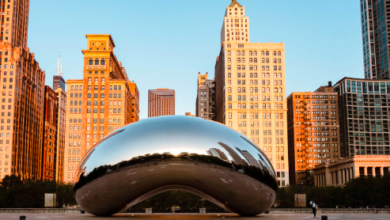Innovative Solutions in Protective Packaging: Enhancing Product Safety

In the realm of modern logistics and product safety, protective packaging stands as a crucial element. This specialized packaging is designed to shield products from damage during transit, handling, and storage. Protective packaging not only ensures the safety and integrity of goods but also plays a significant role in enhancing brand perception. This article delves into various types of protective packaging, highlighting their benefits, applications, and how they contribute to both product safety and sustainability.
1. The Importance of Protective Packaging
Protective packaging serves as the first line of defense against physical impacts, environmental factors, and other potential hazards that could compromise a product’s quality. Effective protective packaging is essential for preventing damage during transport and storage, which can lead to financial losses and diminished customer satisfaction. By investing in high-quality protective packaging, businesses can ensure their products reach consumers in pristine condition, thereby bolstering their reputation and reducing returns or complaints.
2. Types of Protective Packaging
2.1. Polystyrene Packaging
Polystyrene packaging is one of the most commonly used types of protective packaging. It is favored for its lightweight nature, excellent insulation properties, and cost-effectiveness. This material is 98% air, which makes it an efficient choice for cushioning products against impacts. Polystyrene packaging is also non-toxic, chemically inert, and rot-proof, ensuring that it provides reliable protection for a wide range of products.
2.2. Polyethylene Foam Protective Packaging
Polyethylene foam protective packaging offers a versatile and robust solution for various packaging needs. Made from cross-linked polyethylene, this type of foam is known for its superior cushioning properties and resistance to moisture, chemicals, and temperature fluctuations. It is ideal for protecting delicate items and electronics during transit. Polyethylene foam is available in various colors and is often used in multi-trip packaging applications due to its durability.
2.3. Polyurethane Packaging
Polyurethane is another material used in protective packaging, particularly for lighter-weight products or those requiring additional cushioning. While it is more expensive than polystyrene, polyurethane provides excellent protection and can be tailored to specific product needs. It is often used in situations where high-quality cushioning is required, such as in the packaging of sensitive electronic components or luxury items.
2.4. Nomafoam and Plastazote
Nomafoam and Plastazote are specialized foams used in protective packaging. Nomafoam offers resilience and a range of densities, while Plastazote provides a smooth finish and a spectrum of colors. Both materials are effective in cushioning and protecting products, and they can be customized to meet specific packaging requirements.
3. Benefits of Protective Packaging
3.1. Enhanced Product Safety
The primary benefit of protective packaging is its ability to safeguard products from damage. By cushioning items against impacts and providing a barrier against environmental factors, protective packaging ensures that products remain intact and functional when they reach the consumer. This is particularly important for fragile or high-value items that require extra protection.
3.2. Cost-Effectiveness
Investing in protective packaging can lead to long-term cost savings by reducing the likelihood of product damage and returns. High-quality packaging minimizes the risk of damaged goods, which can result in lower replacement costs and fewer customer complaints. Additionally, protective packaging solutions are often customizable, allowing businesses to optimize their packaging for both performance and cost-efficiency.
3.3. Improved Brand Perception
Effective protective packaging not only protects products but also enhances their presentation. Well-designed packaging can serve as a powerful marketing tool, showcasing a brand’s commitment to quality and attention to detail. Custom packaging solutions, in particular, allow businesses to create a unique and memorable unboxing experience for customers, reinforcing brand identity and customer loyalty.
3.4. Environmental Sustainability
Sustainability is becoming an increasingly important consideration in packaging design. Many protective packaging materials, such as expanded polystyrene and polyethylene foam, are designed with environmental impact in mind. These materials can be recycled or repurposed, reducing their overall environmental footprint. Companies are also exploring the use of eco-friendly materials and practices to further enhance their sustainability efforts.
4. Custom Protective Packaging Solutions
4.1. Tailored Designs
Custom protective packaging solutions offer businesses the opportunity to create packaging that perfectly fits their product’s specifications. By working with packaging specialists, companies can design packaging that meets their unique requirements, including size, shape, and protective features. This level of customization ensures optimal protection and efficiency throughout the supply chain.
Read Also: Boost Your Business: Essential Reasons to Implement Odoo Dashboards
4.2. Complete Packaging Solutions
Advanced Protective Packaging provides a comprehensive range of services, from custom design to the supply of packaging materials. By offering both outer cartons and internal fitments, they simplify the packaging process and ensure that all components work together seamlessly. This approach reduces development time and streamlines sourcing, making the packaging process more efficient and cost-effective.
5. The Future of Protective Packaging
As technology and materials continue to evolve, the future of protective packaging looks promising. Innovations in materials science are leading to the development of new, more sustainable packaging options. Companies are increasingly focusing on reducing their environmental impact while maintaining the effectiveness of their packaging solutions. Additionally, advancements in design and manufacturing processes are enabling more precise and efficient packaging solutions, further enhancing product protection and sustainability.
Conclusion
Protective packaging is an integral part of the modern supply chain, playing a crucial role in ensuring that products arrive safely and intact. From polystyrene and polyethylene foam to polyurethane and specialized foams like Nomafoam and Plastazote, various packaging materials offer unique benefits tailored to different needs. Investing in high-quality protective packaging not only enhances product safety but also improves brand perception and supports sustainability efforts. As the packaging industry continues to innovate, businesses can look forward to even more effective and eco-friendly solutions that meet their evolving needs.
In summary, protective packaging is more than just a practical necessity; it is a strategic component of product delivery and brand management. By choosing the right protective packaging solutions, businesses can ensure that their products are well-protected, their customers are satisfied, and their environmental impact is minimized.







